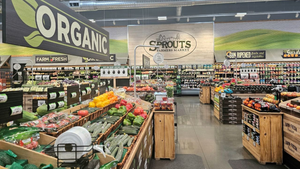How to keep produce safe and soundHow to keep produce safe and sound
Supermarkets must monitor both in-house and supply chain activities to minimize threats
October 3, 2024

Ensuring fruits and vegetables are safe to consume is vital for merchandising success. But with a plethora of potential contaminants, retailers face the arduous task of continually tracking a wide range of operational practices to reduce consumption risks, analysts said.
“Retailers must prioritize produce food safety by implementing robust protocols both in-store and with suppliers,” said Shipra Pareek, senior account manager, food retail, at NSF, an Ann Arbor, Mich.-based provider of testing, inspection, certification, and advisory services, and digital solutions. That includes requiring suppliers to carry certifications from organizations that validate that the vendors are following best practices, she said.
Vigorous adherence to safety procedures is particularly critical for produce as consumers ingest many raw selections, Shipra said. Threats include cross-contamination in which products have contact with other foods that may carry foodborne illness; contact with pests; improper handling and storage, such as holding produce at incorrect temperatures during transportation, storage, and in-stores; and a lack of proper sanitation practices.
Maintaining safety, however, can be difficult due to supply chain complexities, she said, with include having products contact multiple touchpoints throughout the chain. Another complication is that retailers often sell items from multiple suppliers, she said.
The risk of cross-contamination also is substantial because of the considerable amounts of shoppers that handle produce in stores, Pareek said. “Products require greater shelf monitoring and inventory management,” she said.
A robust traceability system can enable retailers to quickly identify and remove contaminated products, which also reduces the impact of recalls, Pareek said. Recurring audits for food safety certifications and having third-party inspectors conduct internal audits will further enhance safety and identify areas in need of improvement, she said.
Further safeguards can focus on preventing the subjection of fruits and vegetables to excessive moisture, which can accelerate spoilage by promoting the growth of bacteria and mold in such delicate items as berries, mushrooms, and leafy greens, Pareek said.
“Constant exposure to water can also lead to over-saturation, causing produce to become soggy and lose its natural texture,” she said. “This added moisture may dilute water-soluble nutrients, such as vitamin C and B, further diminishing the quality of the produce over time. While water sprays may extend the shelf life of some items, they can inadvertently shorten it for others if not carefully managed.”
Additionally, operators can reduce food safety incidents by requiring employees to regularly undergo training to keep best practices top of mind, with a focus on handwashing, cleaning, and storage methods, Pareek said.
About the Author
You May Also Like


.webp?width=300&auto=webp&quality=80&disable=upscale)



